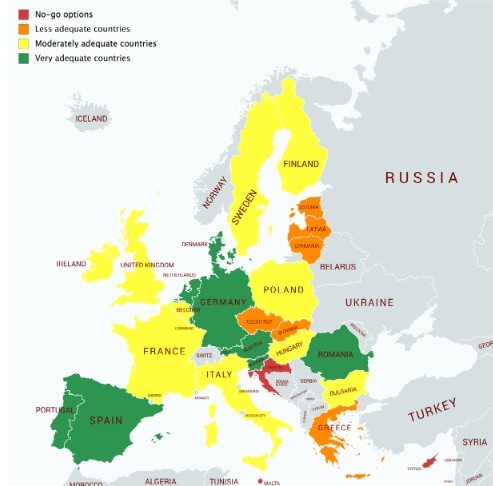EuroPACE Market Analysis
EuroPACE is an innovative tool designed to make home renovation simple, affordable and reliable for all Europeans by combining affordable financing with people-centric technical assistance. EuroPACE offers 100% up-front financing that can be repaid over a long term of up to 25 years. The innovation lies in the collection and repayment mechanism – financing is attached to the property and is repaid regularly with charges linked to a property. Homeowners are offered logistical and technical support throughout the process and access to trained and qualified con-tractors. Thus, EuroPACE overcomes the main barriers to home renovation – lack of financing, technical knowledge and complexity of the works. The concept of EuroPACE is inspired by the success of a financing model called Property Assessed Clean Energy (PACE), launched in California in 2008. In the United States (US), the PACE market reached over USD 6 billion in funded projects, including the retrofit of over 220,000 homes, which resulted in more than 50,000 new local jobs and the creation of hundreds new companies.

EuroPACE combines the best practices from the US PACE market with project partners’ substantial experience in improving energy efficiency in European buildings. EuroPACE is a three-year project that intends to assess market readiness, deploy a pilot programme in Spain and scale across Europe to four leader cities. A two-phase research (firstly – legal & fiscal readiness, and secondly – market demand) has been carried to assess the overall readiness for adaptation of this model across the European Union (EU). This document is the second phase of the EuroPACE readiness assessment developed to identify European countries most suited for EuroPACE implementation. It complements the legal and fiscal assessment by focusing on the “demand dimension” by analysing local needs for energy efficiency (EE) and renewable energy sources (RES) in residential building renovation of seven selected countries. Based on the results of legal and fiscal analysis of the EU28 MS, in October 2018 the Steering Committee Group of the EuroPACE Horizon2020 (H2020) project chose seven countries: Austria, Belgium, the Netherlands, Italy, Poland, Portugal, and Romania, for the second phase of evaluation. These countries were selected based on the scoring outlined in D2.1 and two additional considerations developed by the Steering Committee Group. First, a diverse geo-graphical distribution of the countries was an important element for the selection of these seven countries. Secondly, the knowledge and expertise of the Steering Committee Group about the national potential market opportunity was taken into consideration during the selection process. While in Austria a similar mechanism has already been tested but was unsuccessful, the country still has been chosen for further analysis. In Belgium, despite being a federal state, there is a strong local and regional interest in new financial mechanisms designed to upscale residential retrofits across the country. In the Netherlands, asset-based financial instruments are currently being discussed at the national level, which opens a window of opportunity for EuroPACE to be tested in the country. As for Italy, although the property-taxation system is far from stable, potential synergies with successful programmes like Ecobonus or Sismabonus should be explored. In Poland, nearly 70% of the 6-million residential buildings need significant energy efficiency overhaul; these buildings contribute to some of the worst air quality across the EU leading to approximately 47 thousand premature deaths annually. Portugal, given its Mediterranean climate, proves a great potential not only for EE, but also prosumer RES development, given that current incentives are far from sufficient. Romania has been chosen mainly because of its highest home-ownership rate across the EU and the most institutionalised property-related taxation, possibly setting a stable base for EuroPACE being collected alongside existing charges. The map above demonstrates the country scoring (from green to red). The fact that some of the high-scoring countries were not selected for the second phase of this research does not mean that EuroPACE implementation in those countries is not feasible. EuroPACE is a flexible financing instrument and it can be adapted to fit a variety of local legal, political and market conditions. The EuroPACE consortium is open to further explore the potential for EuroPACE financing programmes in other countries on a case by case basis. The seven country-reports presented below examine the social and economic conditions of households, social preferences and environmental attitudes of homeowners, as well as level and type of energy used, retrofit programs and incentives that could integrate or blend with the EuroPACE. Energy policies, that might support the programme, have also been identified. The research method is similar to that used in first phase of the assessment: in-country experts with relevant knowledge of their territories were recruited to provide reliable and most up-to-date information. As in case of D2.1, concise SWOT analyses conclude each of the seven country chapters to facilitate further selection of leader cities and regions.

